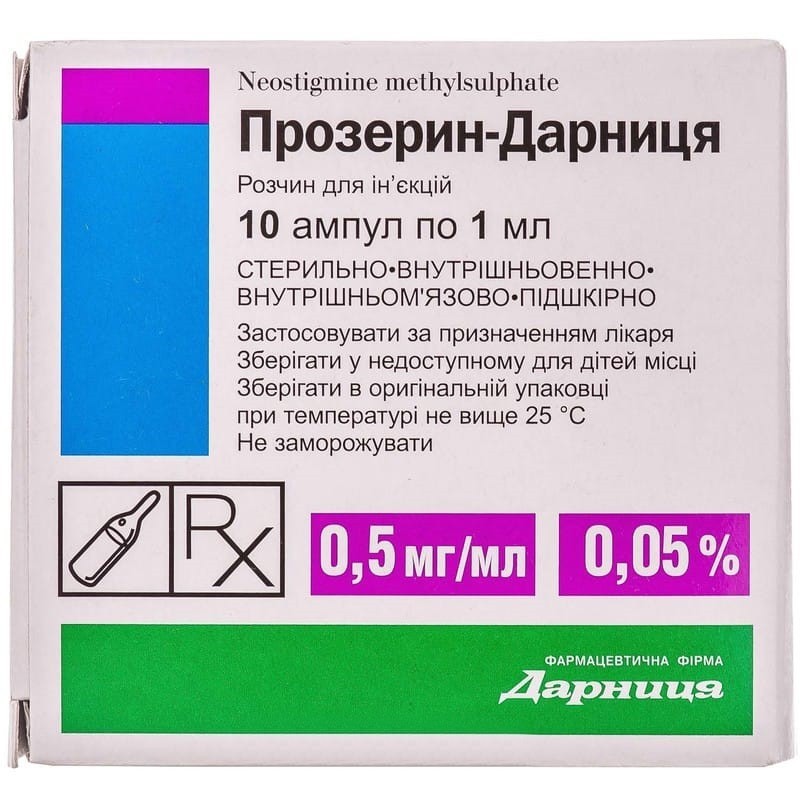



 Secure and encrypted payment processing
Secure and encrypted payment processing We ship to over 40 countries including the USA, UK, Europe, Australia and Japan
We ship to over 40 countries including the USA, UK, Europe, Australia and Japan Guaranteed refund or reship if you haven't received your order
Guaranteed refund or reship if you haven't received your orderNeostigmine (n- (meta-dimethylcarbamoyloxyphenyl) -trimethylammonium metisulfate) is an anticholinesterase agent containing a quaternary ammonium group. expressed reversible cholinesterase blocker. penetrates poorly through the GEB. mainly affects the peripheral nervous system and, due to the indicated blocking effect, it enhances the action of acetylcholine on organs and tissues, restores neuromuscular conduction. in terms of peripheral effects, neostigmine is close to physostigmine and galantamine: it causes bradycardia, increased salivation, myosis, and enhances the tone of the smooth muscles of the intestines, bladder, and bronchi. neostigmine is an antagonist of non-depolarizing curariform muscle relaxants, however, in high doses, it can cause neuromuscular conduction disturbance as a result of the accumulation of acetylcholine and persistent depolarization of nerve synapses.
Myasthenia gravis, motor disorders after a brain injury, paralysis in the recovery period after meningitis, polio, encephalitis, optic atrophy, neuritis, prevention and treatment of atony of the intestine and bladder, stimulation of labor, to narrow the pupil and lower intraocular pressure with open-angle glaucoma as an antidote to non-depolarizing muscle relaxants.
P / C adults are administered 0.5 mg (1 ml of 0.05% solution) 1-2 times a day. the highest doses for s / c administration for adults: single - 2 mg, daily - 6 mg.
With the development of myasthenic crisis in adults, the drug is administered iv in 0.5–1 ml of 0.05% solution, then sc in the above doses with a small interval. To potentiate the effect of the drug, ephedrine is sometimes additionally administered (1 ml of 5% solution s / c). In some cases, in the treatment of myasthenia gravis, the drug is prescribed together with aldosterone antagonists, corticosteroids, and anabolic hormones. It should be borne in mind that insufficient doses can worsen the course of the disease, and exceeding the recommended doses can contribute to the development of a "cholinergic crisis", respiratory failure.
To stimulate labor, the drug is administered sc in 1 ml of 0.05% solution 1-2 times at intervals of 1 hour. Simultaneously with the first injection, 1 ml of 0.01% solution of atropine sulfate is administered once a SC.
If the drug is used to eliminate the effects of muscle relaxants, then atropine sulfate in a dose of 0.5-0.7 ml of 0.1% solution is firstly administered intravenously, then an increase in heart rate is expected, and after 1.5-2 minutes, iv is administered 1.5 mg (3 ml of 0.05% solution) Proserin-Darnitsa. With insufficient effect, the drug is re-administered in the same dose (with the appearance of bradycardia, an additional injection of atropine is given). The maximum possible amount of Prozerin-Darnitsa that can be administered is 5–6 mg, i.e. 10-12 ml of 0.05% solution (total administration time is 20-30 minutes).
Children SC are prescribed 0.05 mg (0.1 ml of 0.05% solution) for 1 year of life, but not more than 0.75 ml of 0.05% solution for one injection. Usually, children Prozerin-Darnitsa is prescribed 1 time per day, but if necessary, the daily dose of the drug can be entered in 2-3 doses.
Epilepsy, hyperkinesis, BA, angina pectoris, severe atherosclerosis; do not prescribe for weakened children in the acute period of the disease, with intoxication.
In case of an overdose of the drug or hypersensitivity to it, effects due to overexcitation of cholinergic receptors (“cholinergic crisis”) can be observed: bradycardia, hypersalivation, miosis, bronchospasm, nausea, increased intestinal motility, diarrhea, frequent urination, twitching of the muscles of the tongue and skeletal muscles, general . to eliminate side effects, the dose of the drug is reduced or canceled. if necessary, atropine, metocinium iodide and other anticholinergics are administered.
In the dark place.